Exploring the Nagcarlan Underground Cemetery in Laguna
After heading to La Resurreccion Parish in Victoria Laguna, we went to our third and fourth destinations, the National Shrine of Saint Anthony of Padua in Pila, Laguna and the Immaculate Conception Parish in Santa Cruz respectively. I already blogged about these two churches from my 2019 Laguna pilgrimage tour so I might have to skip them for this new Laguna Church series. Our fifth destination is the San Bartolome Apostol Parish in Nagcarlan, Laguna. However, before heading to this church, we grabbed the opportunity to visit one of the town’s famous historical landmarks, the Nagcarlan Underground Cemetery.

The chapel and hollow walls of Nagcarlan Underground Cemetery
The Nagcarlan Underground Cemetery was declared a National Historical Landmark in 1973 (formally declared in 1982) and was also dubbed as the only Underground cemetery in the country. It is located in Barangay Bambang in Nagcarlan and was built in 1845 under the supervision of Franciscan priest, Fr. Vicente Velloc. This 1 hectare of land served as a public burial site for the people of Nagcarlan while the underground chamber below the chapel was exclusively built for the Spanish friars. Ever since it was declared a national historical landmark, no more burials were made in the cemetery.

The niches on walls


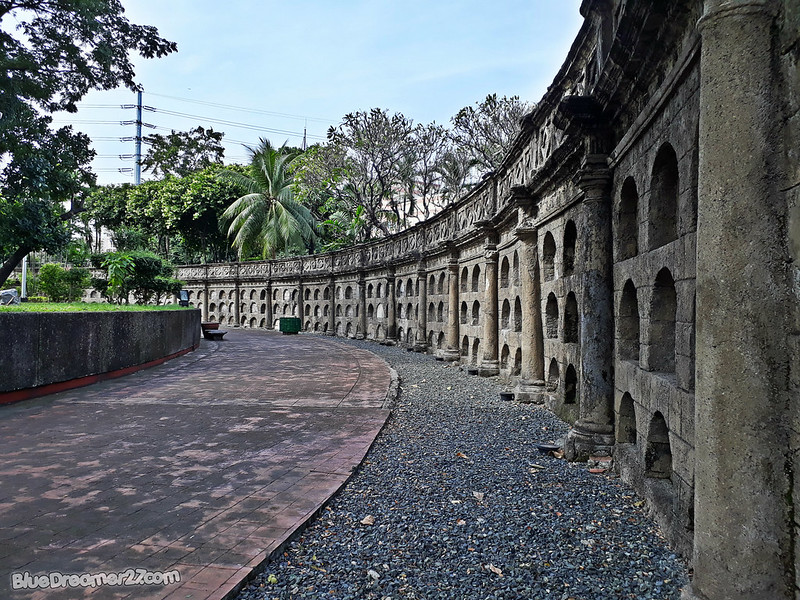
The niches on the walls of Paco Park Cemetery in Manila (very identical to Nagcarlan)
The circular cemetery features a total of 240 apartment-type niches on the walls (120 niches in each side of the chapel). The underground crypt, on the other hand, houses 36 additional tombs for the Spanish friars. Interestingly, the cemetery of Nagcarlan somehow reminds me of the Paco Park and Cemetery in Manila. Both of which are circular cemetery with hallowed walls that served as niches. They are also both historically significant!
It is said that during the Philippine Revolution, the cemetery served as a meeting place of the revolutionary leaders of the Katipunan. Pedro Paterno and Gen. Severino Taiño of the “Maluningning” command held a meeting at the cemetery where they planned the historic Pact of Biak-na-Bato in 1897 which took place in San Miguel, Bulacan. In addition to that, the underground cemetery also served as hideout for Filipino leaders during the Philippine–American War and of guerillas in World War II. You can tell that the cemetery has witnessed a lot of historical events over the years.

The façade of the Chapel
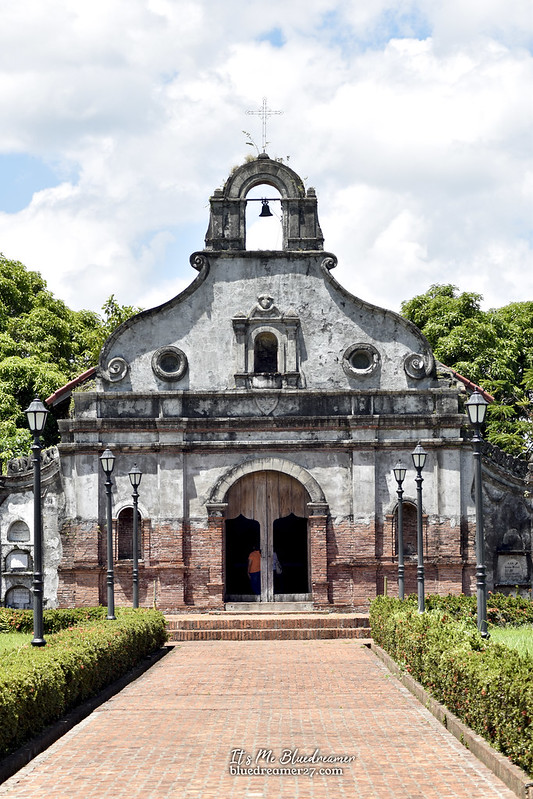
Red Bricked Pathway leading to the chapel
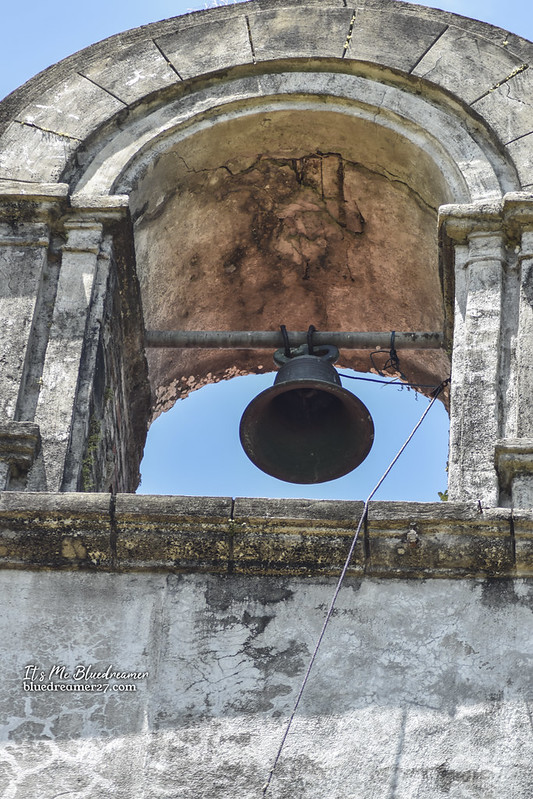
Similar to the Paco Cemetery, the site is also built with a chapel. It comes with a very beautiful façade built with red bricks similar to the materials used for San Bartolome Apostol Parish. In fact, the cemetery was built together with the construction of the expanded St. Bartholomew Parish Church and rectory (which explains why both shares the same materials). The facade comes with empty niches that probably enshrined some saint statues before. There is a couple of small rose windows and a bell on top of its pediment.

The San Bartolome Apostol Parish in Nagcarlan, located just few meters away from the cemetery
The chapel comes with a simple interior with walls exposing the old paintings and designs. It comes with blue-pattern ceramic tile floors. The wooden altar enshrines the image of Santo Sepulcro. The cemetery underwent renovations before it was again opened to the public during the unveiling of the marker on October 24, 1981. The oldest tomb is dated 1886 while the last interment was in 1982 when it was formally declared as a National Historical Landmark.
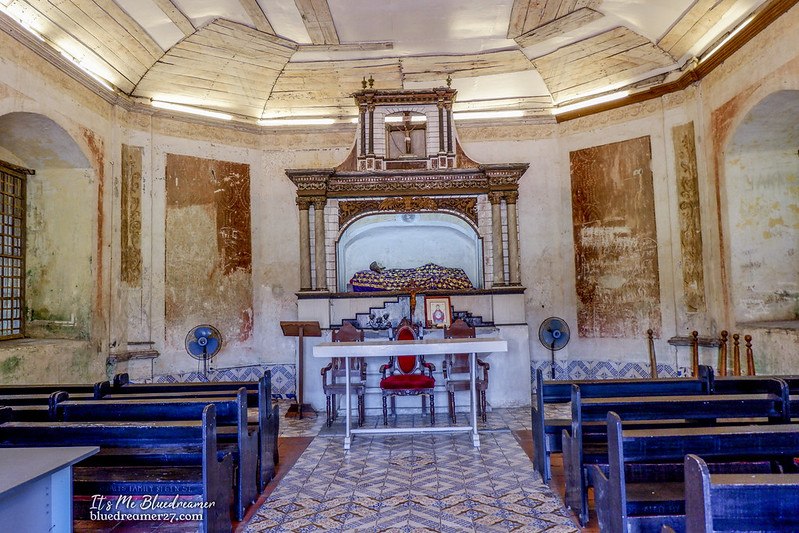
The chapel’s interior with the image of Santo Sepulcro in the altar

Located 15 feet below the chapel is the underground graveyard consisting of only 36 tombs arranged in four walls. The crypt and chapel is connected by two flight of steps. There is also an empty altar in the underground graveyard.
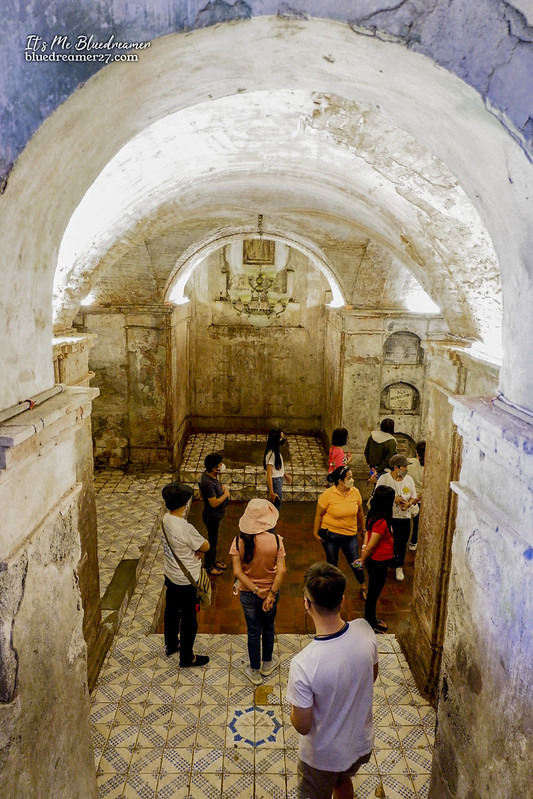
Entrance to the underground chamber

Old ceramic tile flooring

The underground tombs of Nagcarlan

The welcome arc and the outer walls are also built with red bricks and iron-grill gates. This leads to a red bricked pathway across a green space leading to the cemetery chapel.

The entrance to Nagcarlan Cemetery

Historical Marker outside the cite
While there is really nothing much to see in this place, Nagcarlan Underground Cemetery holds a great piece of history which makes this site worth exploring.
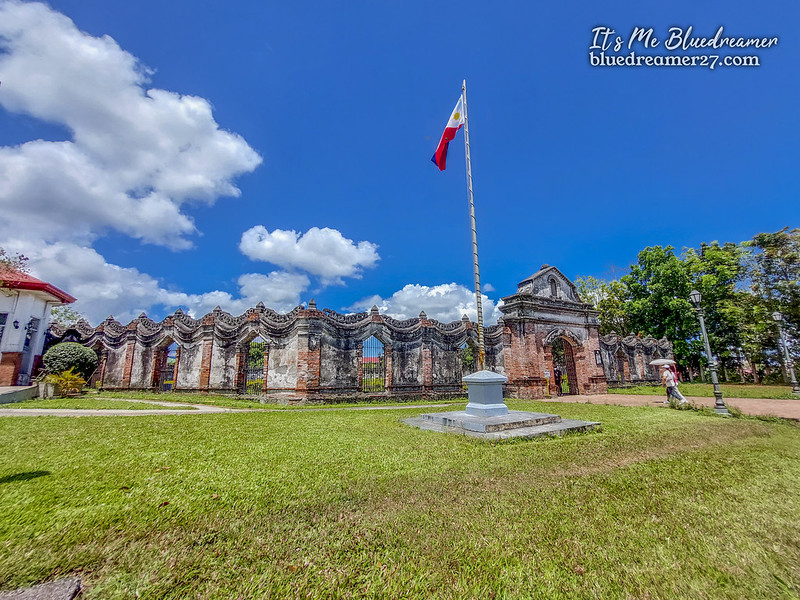
Things You Should Know before visiting the Nagcarlan Underground Cemetery
- There is NO Entrance fee in Nagcarlan Underground Cemetery but donations are highly encouraged for the site’s continuous maintenance
- The place is open for everyone
- The operating hours is every Tuesday to Sundays 8 AM to 4 PM
- Keep in mind that this is a cemetery so pay respect and do not make fun of the niches or the chapel.
- The place is now being managed by the NHCP (you can visit their official FB page here: Museo ng Libingan sa Ilalim ng Lupa ng Nagcarlan)
How to get to Nagcarlan Underground Cemetery
- If you are coming from Manila, take a bus that is bound to San Pablo Laguna. From there, ride a jeep bound to either Nagcarlan or Liliw. Tell the driver to drop you off at Nagcarlan Underground Cemetery.
This post is part of my Laguna Pilgrimage series 2022: Feel free to check the rest of my entries here:
- A Pilgrimage to Laguna 2022: Visiting 14 Beautiful Churches in Laguna
- White House Bistro 1938 – An Ancestral House Turned Restaurant in Liliw, Laguna
- La Resurreccion Parish in Victoria, Laguna
- Nagcarlan Underground Cemetery
- San Bartolome Apostol Parish – Nagcarlan, Laguna
- San Gregorio Magno Parish – Majayjay, Laguna
- San Sebastian Parish – Lumban, Laguna
- Santa Maria Magdalena Church – Magdalena Laguna
- San Juan Bautista Parish – Longos, Kalayaan, Laguna
Also feel free to visit my articles about these Laguna churches
- National Shrine of Saint Anthony of Padua in Pila, Laguna
- Immaculate Conception Church in Santa Cruz, Laguna
- Our Lady of Guadalupe Parish – Pagsanjan, Laguna
- Saint James the Apostle Parish – Paete, Laguna
- Diocesan Shrine of Our Lady of Turumba/ Saint Peter of Alcantara Parish in Pakil, Laguna
- Nuestra Señora de Candelaria Parish in Mabitac, Laguna
- Nuestra Señora de la Natividad Parish in Pangil, Laguna
- Saint John the Baptist Parish in Liliw, Laguna
- San Agustin Parish in Bay, Laguna
- List of Churches to Visit in Laguna for Visita Iglesia
- Pilgrimage to Laguna 2019
Places to visit in Laguna
- White House Bistro 1938 Restaurant
- Esmeris Farm in Liliw
- Camp Silva Hotspring in Calauan, Laguna
- Dalitawan Resort in Majayjay
Feel free to check my VLOG about Nagcarlan Underground Cemetery (and please don’t forget to subscribe)



Pingback: San Bartolome Apostol Parish / Nagcarlan Church - It's Me Bluedreamer!
Pingback: Santa Maria Magdalena Parish of Magdalena, Laguna - It's Me Bluedreamer!